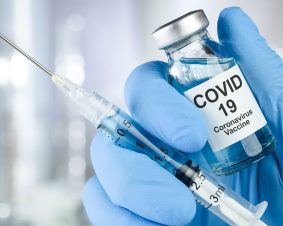 >
Spotlight July 2022: New definition on nanomaterials published
>
Spotlight July 2022: New definition on nanomaterials published
The European Union has published a new definition for nanomaterials as of June 2022. It is recommended that this be used as a basis for future legislation. The new documents can be found on the EC website.
In the new “nanodefinition”, the essential components such as the origin or the size range of the particles (1-100 nm) remain mostly unchanged, but some aspects are simplified that were only included in the old definition from 2011 through explicit extensions. For example, nanomaterials with dimensions below one nanometre, such as some nanotubes and graphene, which were previously explicitly included, are now included generically. For this purpose, elongated particles with two external dimensions smaller than 1 nm and one dimension larger than 100 nm as well as platelet-like particles with one dimension smaller than 1 nm and two dimensions larger than 100 nm are newly taken into account. Particles with two orthogonal external dimensions larger than 100 µm no longer have to be taken into account.
Likewise, some decision criteria have been clarified and simplified. The previous criterion that a material with a volume specific surface area (VSSA) of 60 m2/cm3 or more was classified as nano has now been dropped. Conversely, in future a material can be designated as non-nano if the VSSA is smaller than 6 m2/cm3. Finally, the threshold for the particle number-based size distribution in the new definition is no longer flexible, but fixed at 50 %.

Weitere Spotlights
Spotlight December 2022: Fighting tumors with micro robots
When we, the DaNa team as operators of the website nanopartikel.info, write about nanobots, i.e. nanometre-sized machines, we point out that these machines belong to science fiction, may even remain a utopia – i.e. never realisable. On the significantly larger micro-scale, however, small machines are conceivable that could help in the therapy of diseases, e.g. […]
Read moreSpotlight July 2021: The Path to Digital Material Research – It is never too late to start
Machine Learning, Artificial Intelligence, Big Data…. Have you read these words lately? No, these are not just buzzwords. The digitalisation of science is an evolving topic that is gaining importance with each passing day. That is why this month we would like to introduce you to the article “Digital Transformation in Materials Science: A Paradigm […]
Read moreSpotlight February 2021: Nanoobjects in the COVID-vaccine – scientifically correct?
The COVID-19 pandemic induces very different reactions of people on the internet (https://www.cdc.gov/mmwr/volumes/70/wr/mm7002e1.htm) and in the social networks. Without following the conspiracy theories as “5G nanochip hidden in COVID vaccines” some news as “COVID vaccines induce allergic reactions” should be scientifically recognised. The picture from the 5G-nanochip whose plan goes viral on the internet is […]
Read moreSpotlight August 2020: The nanoGRAVUR Grouping approach
In August, we would like to present a paper of the German BMBF project nanoGRAVUR. nanoGRAVUR dealt from 2015-2018 with the grouping of nanostructured materials with regard to occupational safety, consumer and environmental protection and risk mitigation. The approach is now described by the project partners in this paper.Due to the variety of synthetic nanomaterials and the numerous modifications (differences in size, shape, chemical composition and surface functionalization), the effort required to investigate effects and behaviour within the framework of regulatory requirements is…
Read more


